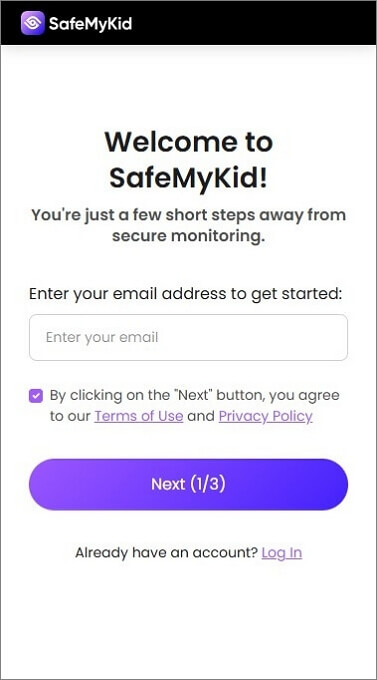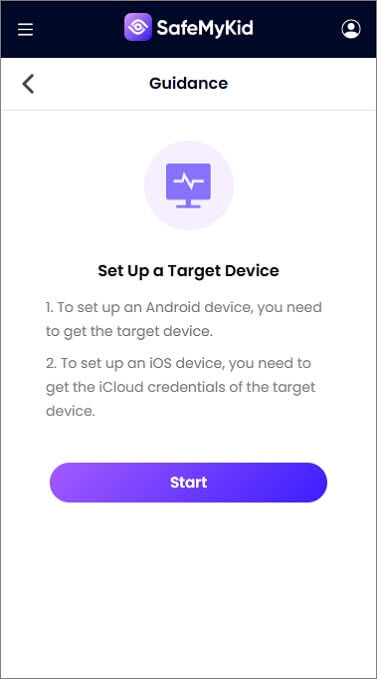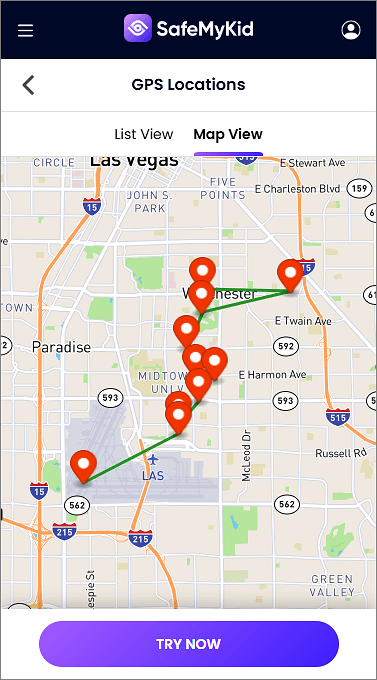How Someone Can Track Your Phone without You Knowing: 6 Secret Methods

The question of how someone can track your phone without you knowing has become increasingly relevant as surveillance technology becomes more accessible, leaving many people vulnerable to privacy invasions and unwanted monitoring.
![]()
With the right tools and access, someone can monitor your location, messages, calls, and online activities completely invisibly, making it crucial to understand these methods and how to protect yourself from unwanted surveillance.
Is It Possible for Someone to Track Your Phone without You Knowing?
Yes, tracking your phone without your knowledge is entirely possible through several technical methods that operate invisibly:
Remote tracking typically requires:
- Brief physical access to install monitoring software
- Your cloud account credentials (Google/Apple ID)
- Deployment of commercial spyware through deceptive links
- SS7 network vulnerabilities exploitation
- Access to your mobile carrier account information
Available tracking methods vary in sophistication:
- Spyware apps operate completely hidden from device menus
- Account-based tracking leaves no trace on the target phone
- Cell tower triangulation works without any phone modifications
- Commercial monitoring services run in "stealth mode"
- Malicious apps disguise tracking as legitimate features
Legal limitations exist - tracking an adult's phone without consent violates privacy laws in most jurisdictions and could result in criminal charges, civil liability, and restraining orders depending on the circumstances.
SafeMyKid - The Legal Tool to Track Someone's Cell Phone without Them Knowing

If you're looking for a comprehensive monitoring solution, SafeMyKid offers advanced tracking capabilities designed primarily for parents monitoring their children's devices or businesses managing company-owned phones.
SafeMyKid provides real-time location tracking, social media monitoring, call logs, text message access, and browsing history through a user-friendly dashboard that makes monitoring straightforward even for non-technical users.
The application operates discreetly on the target device while providing detailed information to the authorized monitoring party, making it one of the most comprehensive solutions available for legitimate tracking purposes.
Why use SafeMyKid to Track Someone's Cell Phone without Them Knowing
When evaluating what makes SafeMyKid an effective monitoring solution, several distinctive capabilities stand out:
- Live GPS tracking- Monitor the target's real-time location with pinpoint accuracy.
- Location history- View where the person has been throughout the day or week.
- Geofencing alerts- Get notified when the phone enters or leaves specific areas like school or home.
- WhatsApp and social media monitoring- Track chats, shared media, and app usage across platforms like WhatsApp, Facebook, Instagram, and Snapchat.
- Call logs & message tracking- See incoming, outgoing, and missed calls, plus full access to SMS conversations.
- Stealth mode- The app remains hidden from the target user, running in the background without any notifications or icons.
- Browsing history access- Review the websites visited, even in incognito mode.
- Wi-Fi tracking- Check the current Wi-Fi connection to determine if it's actively being used.
How to Set up SafeMyKid to Track Someone's Cell Phone without Them Knowing
Setting up SafeMyKid requires a straightforward process that can be completed in minutes:
Step 1. Create Your SafeMyKid Account
Visit the SafeMyKid website to register and establish your secure monitoring dashboard.

Step 2. Configure The SafeMyKid App
For Android: Download and install the SafeMyKid application directly on the target device.
For iPhone: Enter the target's iCloud credentials to enable monitoring without physical installation.

Step 3. Use SafeMyKid to Track Someone's Phone without Them Knowing
Log in to your SafeMyKid account from any device to view comprehensive tracking information, including location, messages, call logs, and application usage.

Once configured, SafeMyKid provides continuous monitoring capabilities, delivering detailed information about the target device's usage and location for legitimate oversight purposes.
5 Methods Someone Can Use to Track Your Phone without You Knowing
When investigating how someone can track your phone without you knowing, several innovative approaches exist that can be deployed without the user's knowledge. Understanding these methods helps determine your vulnerability and protection needs.
1. iCloud/Google Account Access
Remote account-based tracking offers a completely invisible monitoring method that requires no installation on your device, making it particularly difficult to detect.
By accessing your iCloud or Google account, someone can use legitimate features like Find My iPhone or Google's Find My Device to track your location, view your movements, and access backed-up data.
To track through account access:
- Obtain your Apple ID/Google account credentials through guessing
- Log in to the associated tracking services from any device
- View real-time and historical location information
- Access backed-up messages, photos, and contacts
- Monitor without leaving any trace on your actual device
Limitations:
- Requires knowing or obtaining account credentials
- Two-factor authentication can block unauthorized access
- Limited to data that's synced to the cloud account
- Only provides basic location data, not comprehensive monitoring
- May trigger account access notifications on the target device
2. SS7 Network Exploitation
![]()
For sophisticated tracking without any phone access, vulnerabilities in the global telecommunications infrastructure (SS7 network) create a powerful surveillance capability that bypasses all device security.
This method works by intercepting the signals your phone exchanges with cell towers, allowing for location tracking and call/message interception without any software installation or account access.
To implement SS7 tracking:
- Access specialized services that exploit SS7 vulnerabilities
- Target a phone using only its number
- Intercept communication between the phone and cellular networks
- Track location through cell tower connections
- Monitor communications without any on-device footprint
Limitations:
- Requires specialized technical knowledge or expensive services
- Provides approximate location only (cell tower level)
- Increasing security measures by carriers are reducing vulnerabilities
- Primarily available to government agencies or sophisticated attackers
- May leave traces in network logs that can be detected by authorities
3. Mobile Carrier Access
Your mobile service provider maintains extensive data about your location and activities, creating another invisible tracking vector when someone gains access to your carrier account.
Carrier-based tracking works through legitimate account features that show call records, location information, and device status without requiring any access to your physical phone.
To track through carrier access:
- Gain access to your mobile carrier account through credential theft
- View detailed call and message records
- Access family location sharing features
- Review billing statements showing usage patterns
- Request location information through customer service
Limitations:
- Provides only basic call/text records and approximate location
- Carrier security measures may prevent unauthorized access
- Location data is typically limited to cell tower precision
- Real-time tracking features vary by carrier and plan type
- Account access attempts may trigger security notifications
4. Bluetooth and Wi-Fi Tracking
![]()
For tracking without software installation, strategically placed Bluetooth beacons and Wi-Fi access points can detect and monitor your phone's movement through physical spaces.
This method works by identifying your device's unique identifiers as it moves through areas with monitoring equipment, creating a movement profile without requiring any phone modifications.
To implement wireless signal tracking:
- Place Bluetooth beacons or Wi-Fi monitors in locations of interest
- Configure these devices to log specific phone identifiers
- Create a network of detection points to establish movement patterns
- Monitor when the target device enters detection range
- Analyze movement data to establish behavioral patterns
Limitations:
- Only works within the range of installed beacons or access points
- Requires significant setup and equipment in multiple locations
- Modern phones randomize MAC addresses, reducing effectiveness
- Doesn't work if Bluetooth or Wi-Fi is disabled on the target device
- Cannot track specific activities beyond physical presence
5. Apps with Hidden Functionality
Seemingly legitimate applications can contain hidden tracking functionality, creating surveillance capabilities disguised as useful services or entertainment.
These applications request excessive permissions during installation, then use these privileges to monitor location, access messages, or track activities while appearing to be normal apps.
To track through malicious applications:
- Create or modify an app with appealing features
- Include hidden tracking code within the legitimate functionality
- Distribute through app stores or direct downloads
- Request extensive permissions during installation
- Operate tracking features alongside normal app functions
Limitations:
- App store security reviews may detect malicious functionality
- Suspicious permission requests might alert the target
- Modern operating systems limit background access to location
- Apps may be removed during security scans or updates
- Requires the target to voluntarily install the application
When Is It Okay to Track Someone's Phone without Telling Them?
![]()
Tracking someone's phone without their knowledge should only be considered in specific, legally permissible situations where safety and responsibility are the primary concerns:
Parents monitoring minor children under their legal guardianship have the authority to track their children's devices for safety purposes, though transparency typically creates healthier family dynamics.
Businesses may monitor company-owned devices provided to employees, but this should be disclosed in employment policies and device usage agreements.
Legal guardians responsible for vulnerable individuals with cognitive impairments or elderly family members with conditions like dementia may use tracking for safety and quick response to emergencies.
In all cases, tracking should serve a legitimate protective purpose rather than surveillance for control, and should comply with all applicable laws regarding privacy and electronic monitoring in your jurisdiction.
Frequently Asked Questions about Phone Tracking
Understanding answers to these common questions helps you protect against unauthorized surveillance:
1. Can someone track my phone with just my number?
No, ordinary individuals cannot track your precise location using just your phone number through conventional means. However, sophisticated actors with access to specialized services exploiting SS7 network vulnerabilities might achieve approximate tracking.
2. Will my phone show signs if someone is tracking it?
Most professional tracking applications are designed to operate without visible signs, but may cause subtle changes like increased battery drain, unexpected data usage, or performance issues.
3. Can someone track my phone if location services are turned off?
Disabling location services prevents most conventional tracking methods that rely on GPS, but alternative tracking techniques remain viable. Your approximate location can still be determined through cell tower triangulation, Wi-Fi positioning, or Bluetooth detection.
4. Does a factory reset remove all tracking software?
A factory reset eliminates most conventional tracking applications from your device by returning it to its original state. However, this won't affect tracking methods that don't rely on installed software, such as account-based tracking, carrier monitoring, or network-level surveillance.
5. Can tracking software be installed remotely without my knowledge?
While most tracking software requires brief physical access to your device for installation, sophisticated spyware can sometimes be deployed remotely through some apps, or security vulnerabilities.
6. Is it legal for someone to track my phone without my knowledge?
Tracking an adult's phone without their knowledge or consent is generally illegal in most jurisdictions and may violate multiple laws, including those against stalking, unauthorized computer access, and privacy violations.
7. How can I tell if someone has installed tracking software on my phone?
Look for unexplained battery drain, increased data usage, performance issues, and unusual background activity. Check for unfamiliar apps in your app list, review which applications have permission to access your location, and monitor for unexpected account activity.
Conclusion
Understanding how someone can track your phone without you knowing is essential for protecting your privacy in today's connected world.
By recognizing the warning signs, implementing strong security practices, and regularly monitoring your device and accounts, you can significantly reduce the risk of unauthorized surveillance.
